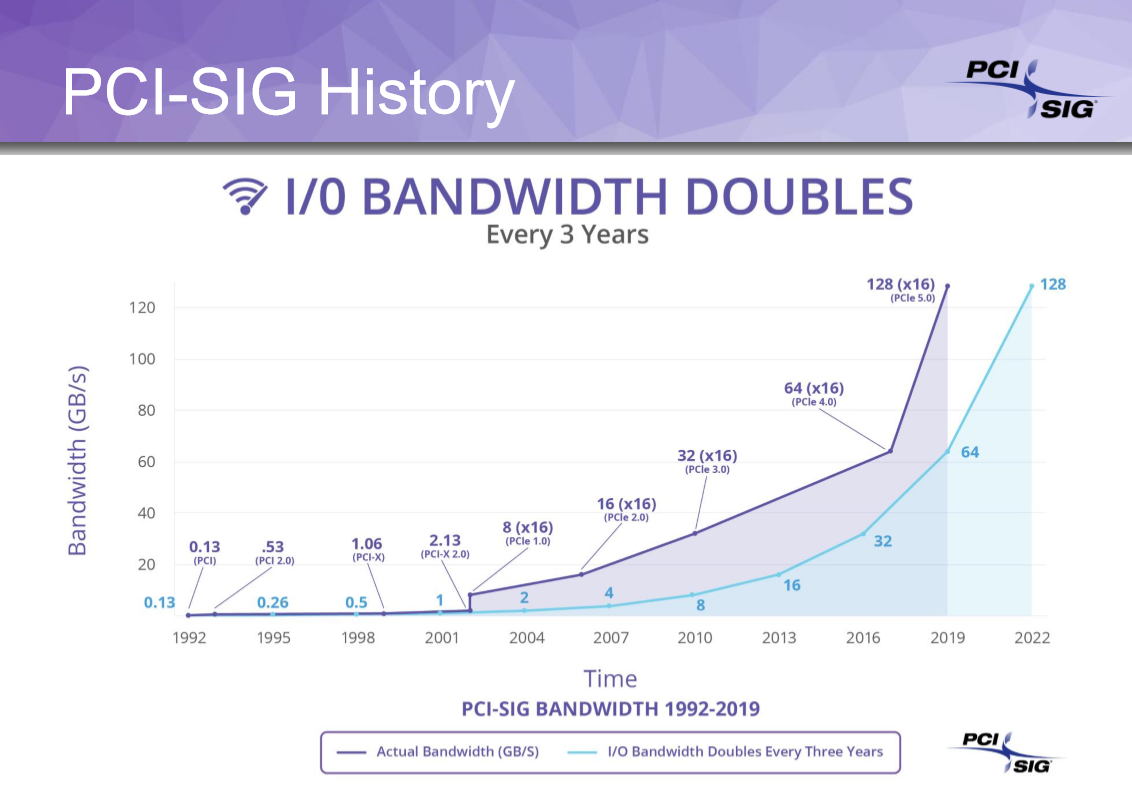PCIe 5.0 Is Ready For Prime Time
The industry has been stuck on PCIe 3.0 for roughly seven years, and even though the first support for PCIe 4.0 on the desktop will land soon in AMD's third-gen Ryzen chips and the first PCIe 4.0 SSDs just cropped up, the industry is already adopting PCIe 5.0. The new standard doubles throughput over PCIe 4.0, yielding a data rate of 32 GT/s.
Today PCI-SIG, the organization that defines PCIe standards, announced that it ratified Version 0.9 of the PCI Express 5.0 specification, signaling that end devices will come to market in the near future. (Companies design end devices as early as revision 0.4 and often launch with 0.9.)
PCIe is the ubiquitous engine that pulls a big part of the computing locomotive down the track—it touches nearly every device in your computer. As such, it is the catalyst for the development of many other technologies, such as storage, networking, GPUs, chipsets, and many other devices.
Unfortunately, the PCIe 4.0 standard was late compared to PCI-SIG's normal two-year cadence: PCIe 3.0 landed in 2010, leaving a 7-year gap between it and the introduction of PCIe 4.0. Given the faster arrival of the PCIe 5.0 standard, it's easy to assume it could be short-lived, especially given that vendors have already begun to design devices with new PCIe 5.0 PHY's.
PCI-SIG expects the two standards to co-exist in the market for some time, with PCIe 5.0 used primarily for high-performance devices that crave the ultimate in throughput, like GPUs for AI workloads, and networking applications. That means that many of the leading PCIe 5.0 devices will land in data center, networking, and HPC environments, while less-intense applications, like desktop PCs, are fine with the PCIe 4.0 interface.
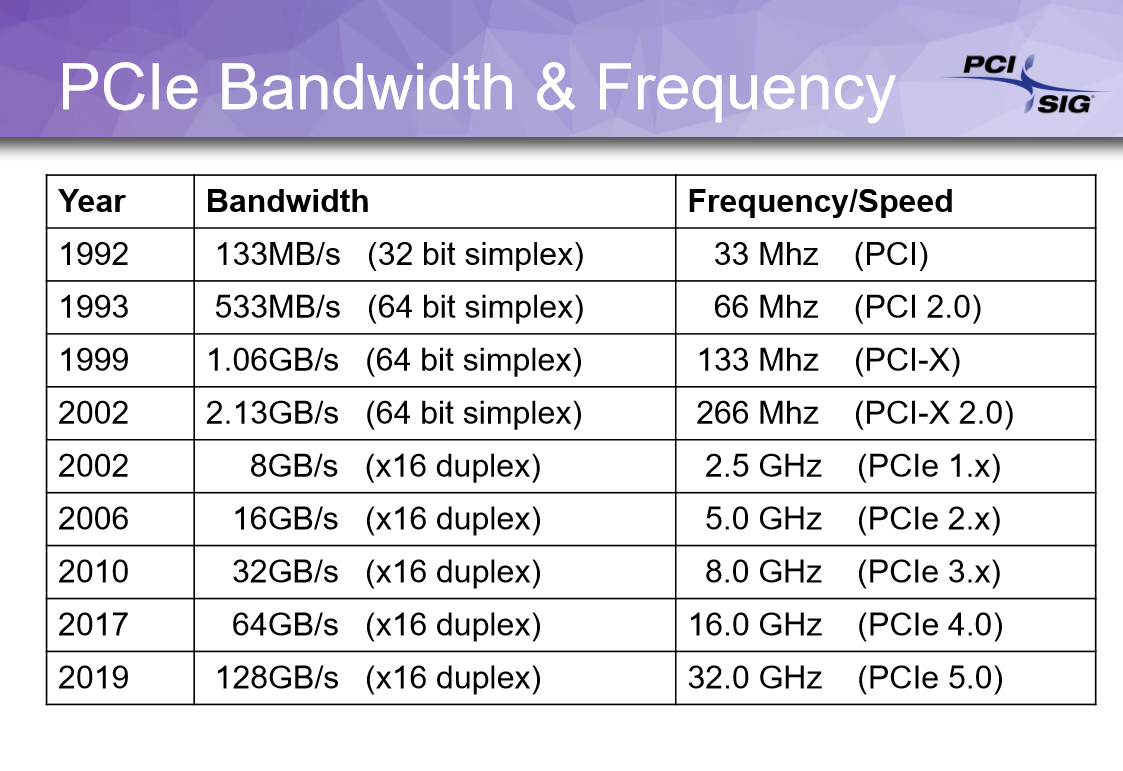

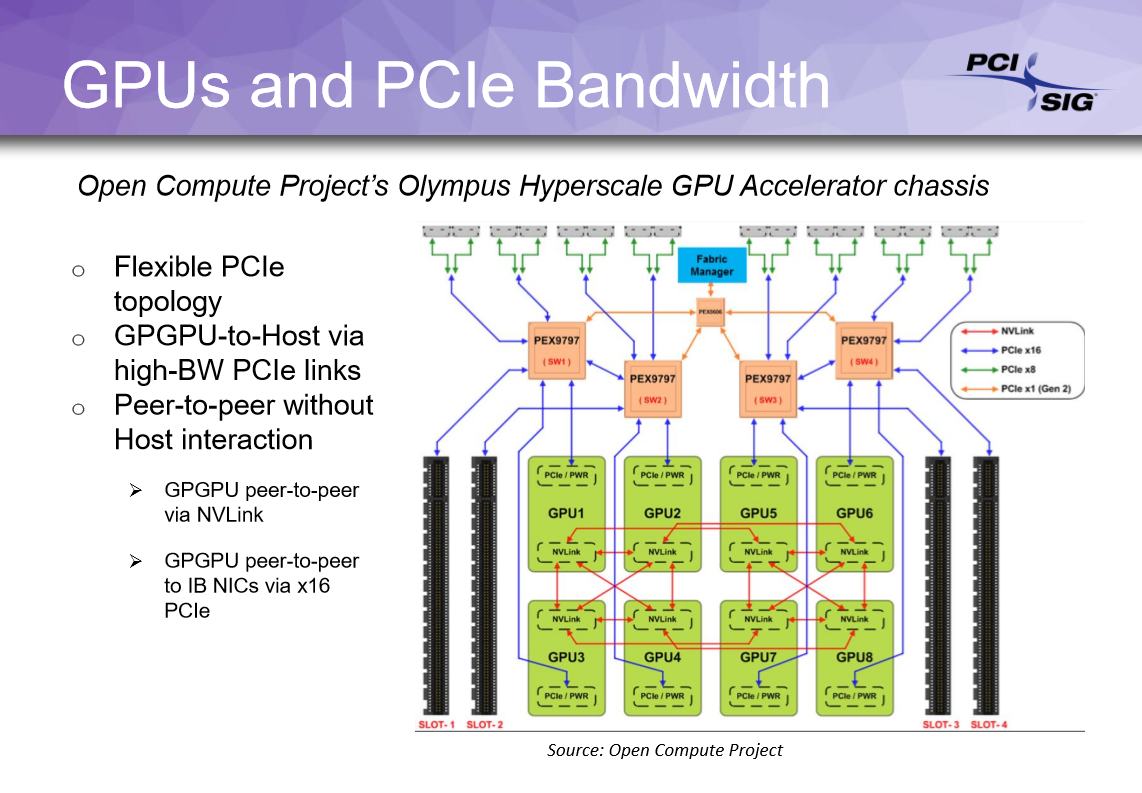

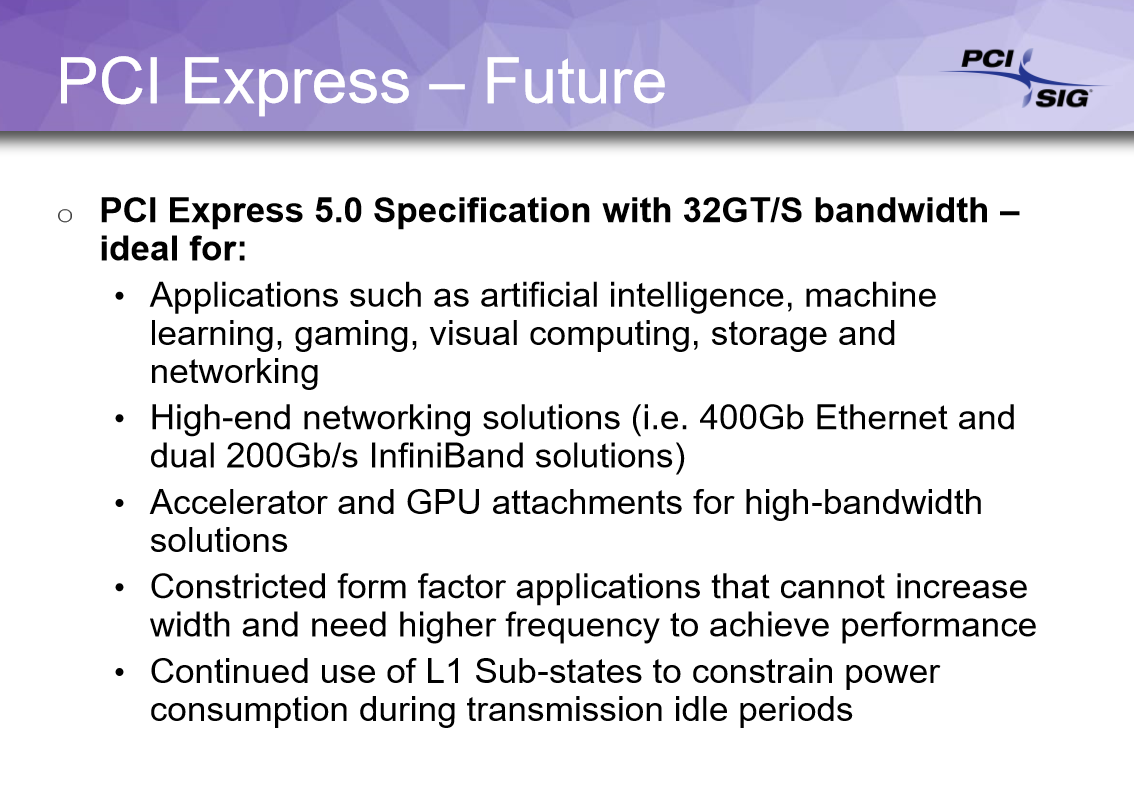

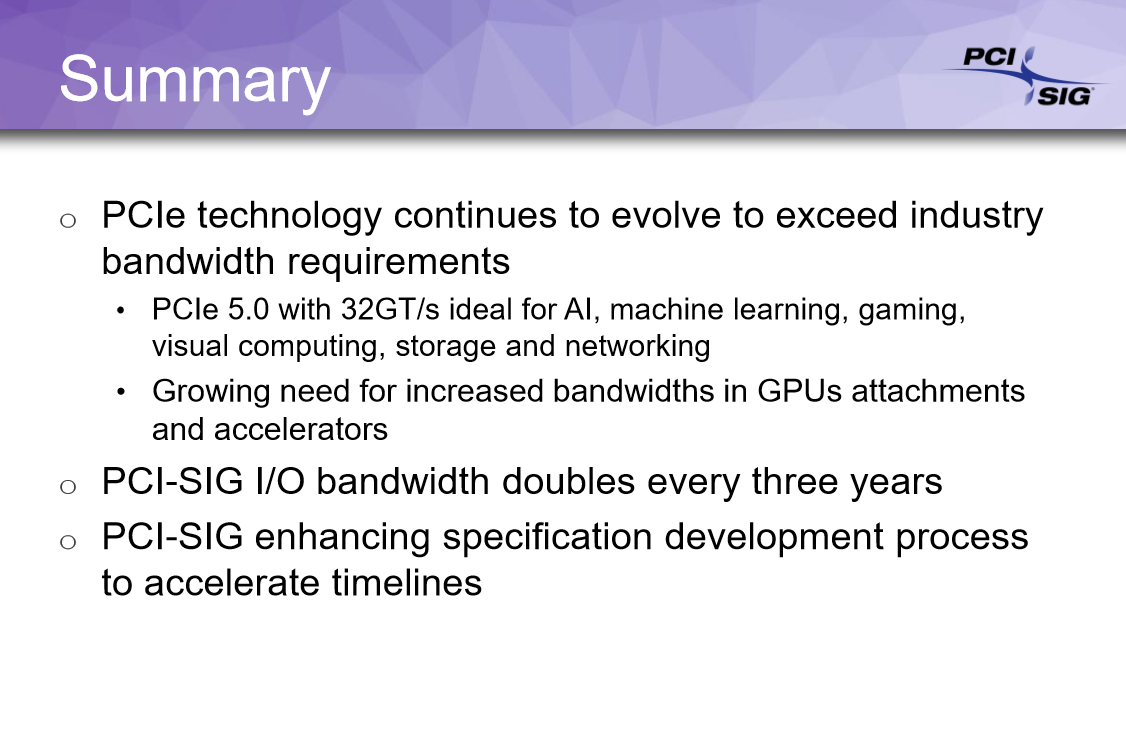
PCIe 4.0 brings 64GBps of throughput, while PCIe 5.0 will double that to 128GBps. Both revisions still use the 128b/130b encoding scheme that debuted with PCIe 3.0. PCI-SIG representatives said they are satisfied with the 20% reduction in overhead facilitated by the 128b/130b encoding, and further encoding refinements to reduce the current 1.5% overhead are subject to a diminishing point of returns.
PCIe 5.0 also brings other features, like electrical changes to improve signal integrity, backward-compatible CEM connectors for add-in cards, and backward compatibility with previous versions of PCIe. The PCI-SIG also designed the new standard to reduce latency and tolerate higher signal loss for long-reach applications.
Get Tom's Hardware's best news and in-depth reviews, straight to your inbox.
The PCI-SIG defines the specification, but it has no control over when the end devices make it to market. The PCI-SIG expects to ratify the final 1.0 revision in the first quarter of 2019, and the first PCIe 5.0 devices should debut this year. Broader availability should come in 2020.

Paul Alcorn is the Editor-in-Chief for Tom's Hardware US. He also writes news and reviews on CPUs, storage, and enterprise hardware.
-
salgado18 Reply21687129 said:we should skip PCI 4.0 and move directly to 5
Tell that to AMD launching 4.0 motherboards this year. -
TCA_ChinChin Good for compute I guess, consumer graphics cards still don't use enough bandwidth for 3.0 let alone 4 or 5, but bringing 5.0 motherboards out would be nice cause it would mean more pcie lanes for storage and things other than graphics cards.Reply -
stdragon Basically, yeah, PCIe 4.0 is being leapfrogged in favor of 5.0. As for AMD's 4.0 implementation, while not many devices will develop with 4.0, their MB should still be cross compatible with coming 5.0 devices but obviously stepped-down to 4.0 speeds.Reply -
mikewinddale Meanwhile, Ryzen motherboards still have PCIe slots and M.2 sockets that only operate at 2.0 speeds.Reply -
techy1966 Yea maybe they should worry about getting PCI-e 4.0 out the door before going to PCI-e 5. It seems everyone is in such a hurry these days to get the tech out asap because the older tech that probably came out like 1 year earlier is so slow now yet when it came out a year before it was labeled as blazing fast. Yes PCI-e 3.0 is 7 years old now and yet we are just now starting to come near it's limits with graphics cards. Oh but I forgot those PCI-e based SSD drives max it out and the one shown at CES was doing over 4GB's a second read and write on PCI-e 4.0 and of coarse that is not fast enough for the want to be tech nerds because hey we need moooore faster.Reply
As for AMD PCI-e 4.0 boards or should I say CPU's with support for it. I read on Anandtech that even the older x370,x470 boards with a new Ryzen 3000 CPU will at least support PCI-e 4.0 on the first 16x slot because the travel distance form the CPU to the slot is more than short enough to support the signals fine as well as voltage requirements needed but they were not sure if the slots farther down would work in 4.0 mode. Either way probably better to just get a x570 board with direct support for PCI-e 4.0 that way it will most likely support PCI-e 5.0 at least in theory on the first slot unless AMD has already worked that all out and when 5.0 does drop the Ryzen 4000 or 5000 CPU's which might support 5.0 will drop into x570 boards and have 5.0 support. Either way it makes no difference to me the next card I get even if it supports PCI-e 4.0 and I get a x570 board I probably won't be upgrading to a card with 5.0 support for at least 2-3 years after 5.0 drops onto the market.
